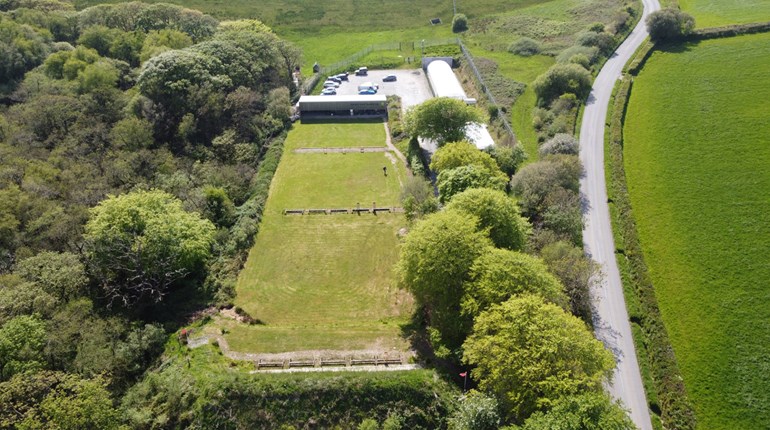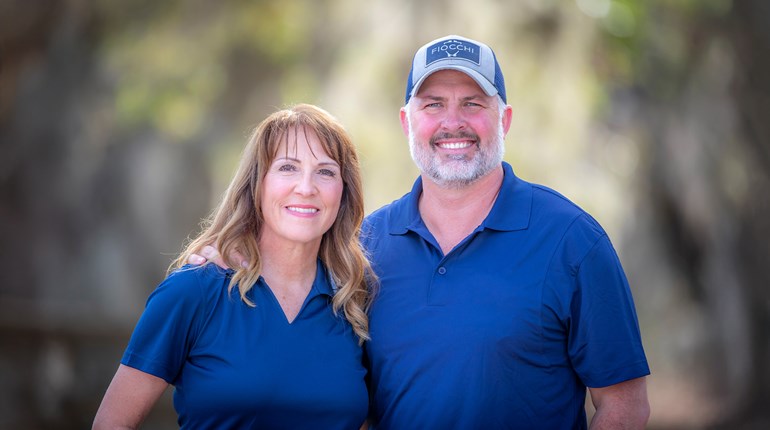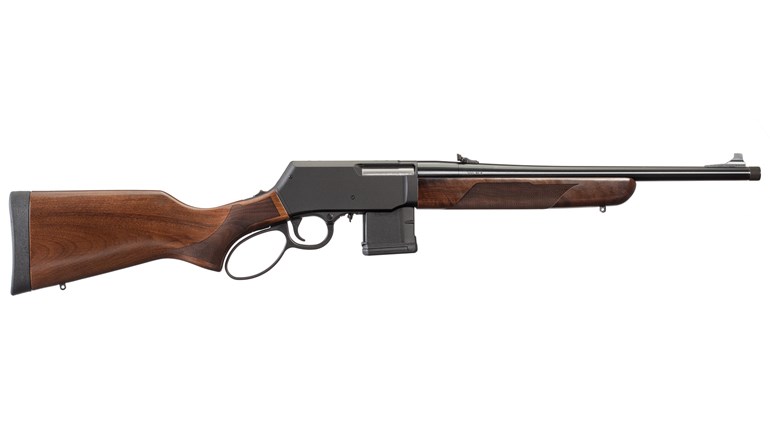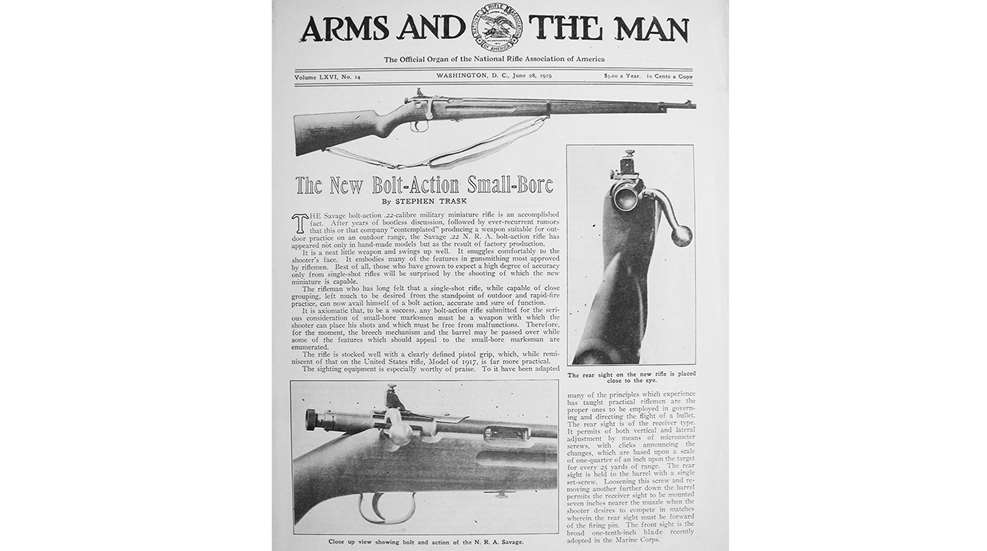
In the forward to the program for the 1919 National Rifle Association of America’s inaugural smallbore rifle matches Captain Edward Carthart “Ned” Crossman wrote, “The National Rifle Association Small-Bore Matches of 1919 are the first in our rifle-shooting history and constitute the ‘opening bow’ of a feature of the shooting game which we hope will become a permanent part of the annual matches of the great parent organization.”
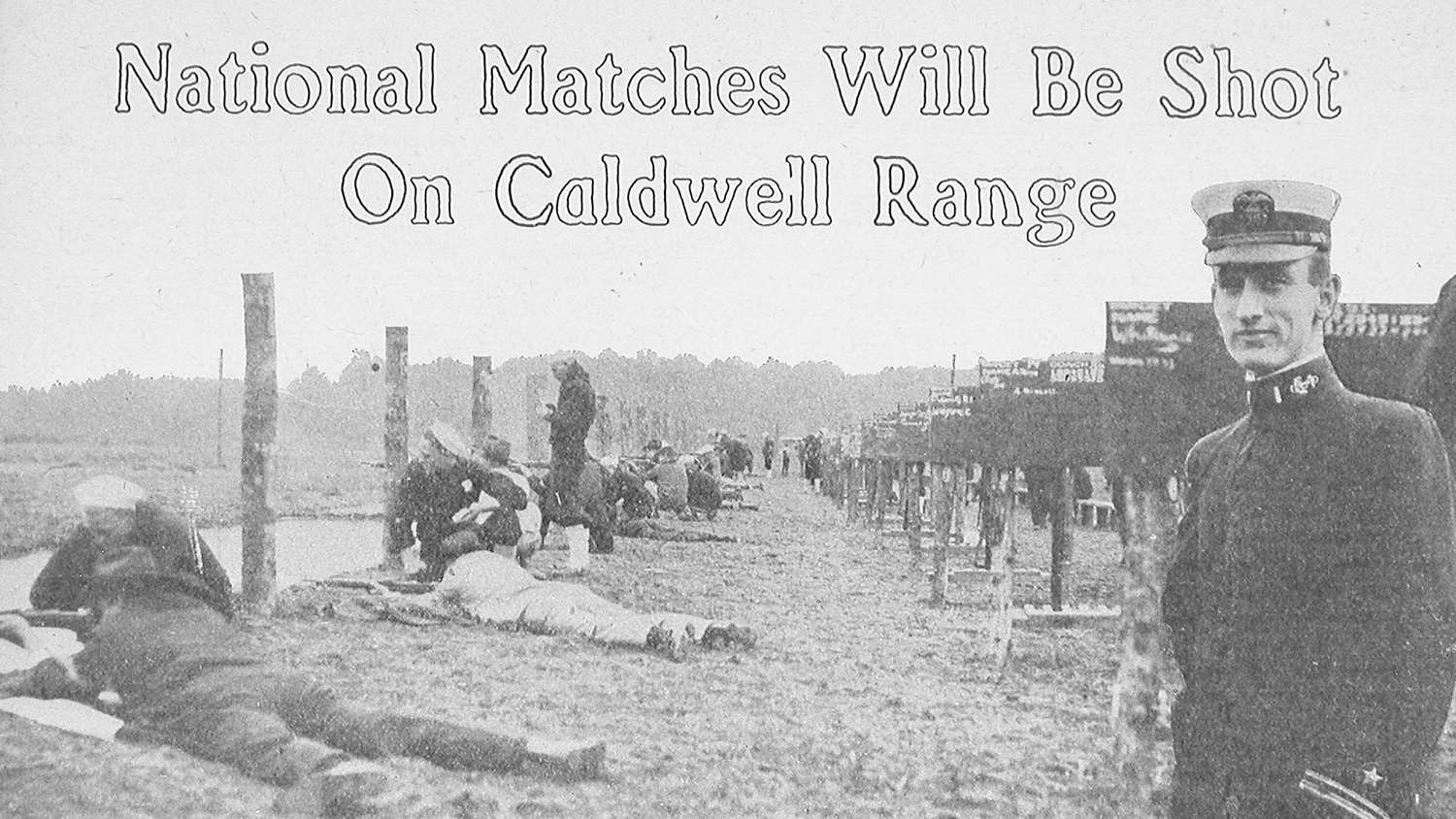
Crossman was the dean of gun writers in the interwar years―in fact he may have been the first to earn a living writing for shooting magazines. He was also a director of the National Rifle Association and had been campaigning to establish a smallbore shooting program as a feeder for, as he saw it, the more important service rifle competitions. Seeing the opportunity of a having a smallbore competition coincide with the 1919 National Matches at Caldwell, NJ, Crossman took to the pages of the Association’s official journal (and predecessor to flagship NRA Publication American Rifleman), Arms and the Man. He wrote to raise the consciousness of the general shooting community to the smallbore game while soliciting ideas from the smallbore community about the form for a national smallbore match.
Crossman quickly learned that one should be careful about what one wishes. In response to his appeal the NRA announced, on June 7, 1919, that he had been selected to conduct a national smallbore rifle championship to coincide with the 1919 National Matches, scheduled to start in less than two months.
Faced with the daunting task of creating a tournament out of nothing, Crossman enlisted the aid of Captain Grosvenor L. Wotkyns, USA as the Range Officer. Captain W.H. “Cap” Richard, USA, of Winchester, and Fred Kahrs of Remington were also dragooned onto the match staff. Crossman’s ace in the hole was the Statistical Officer, Captain Edward J.D. Newitt, a British citizen. Newitt had extensive experience in organizing the British smallbore championships at Bisley and would lend his expertise to the NRA’s fledgling efforts.
Crossman was also named to captain a United States team to answer a challenge from England’s Society of Miniature Rifle Clubs to compete for the Sir Thomas Dewar Challenge Cup. Competition for the Dewar Cup had been suspended during the Great War and, with the end of hostilities, the British were anxious to reestablish the match. The two shooting national associations negotiated a set of rules designating teams of 20 competitors who would fire 40 record shots, 20 at both 50 yards and 100 yards with metallic sights at the British Target, a 3-pound trigger pull, and a time limit of one minute per shot―rules that have remained virtually unchanged to this day.
Just three weeks after being appointed, Crossman published the program for the first smallbore national match in Arms and The Man. He announced that the course of fire would be divided between prone events at 50 and 100 yards, in the British style, long range shooting at 200 yards to simulate the .30 caliber matches, matches open only to boys or ladies, and novelty matches requiring the breaking of frangible discs at various distances. Some of the matches would be re-entry while others would be squadded. Crossman created a match program that would have wide appeal because wanted a large pool from which to select the Dewar Team.
On August 4, shooters started shooting in prone and position smallbore matches. The 21 a la carte entry events proved popular enough to remind high power rifle coaches of the parable of the lost sheep. It was not uncommon for coaches to have to stop by the smallbore range to gather up missing team members in time for the center-fire matches.
The prize schedule was rich, worth more than $600 (nearly $9,000 today). Fifty percent of all entry fees, 25ȼ and $1 for re-entry and squadded matches respectively, would be returned to the winners in cash and the other half in medals and pennants. There were also merchandise prizes: rifles donated by BSA, Remington, and Winchester, ammunition, gold watches, shooting glasses, cups and trophies.
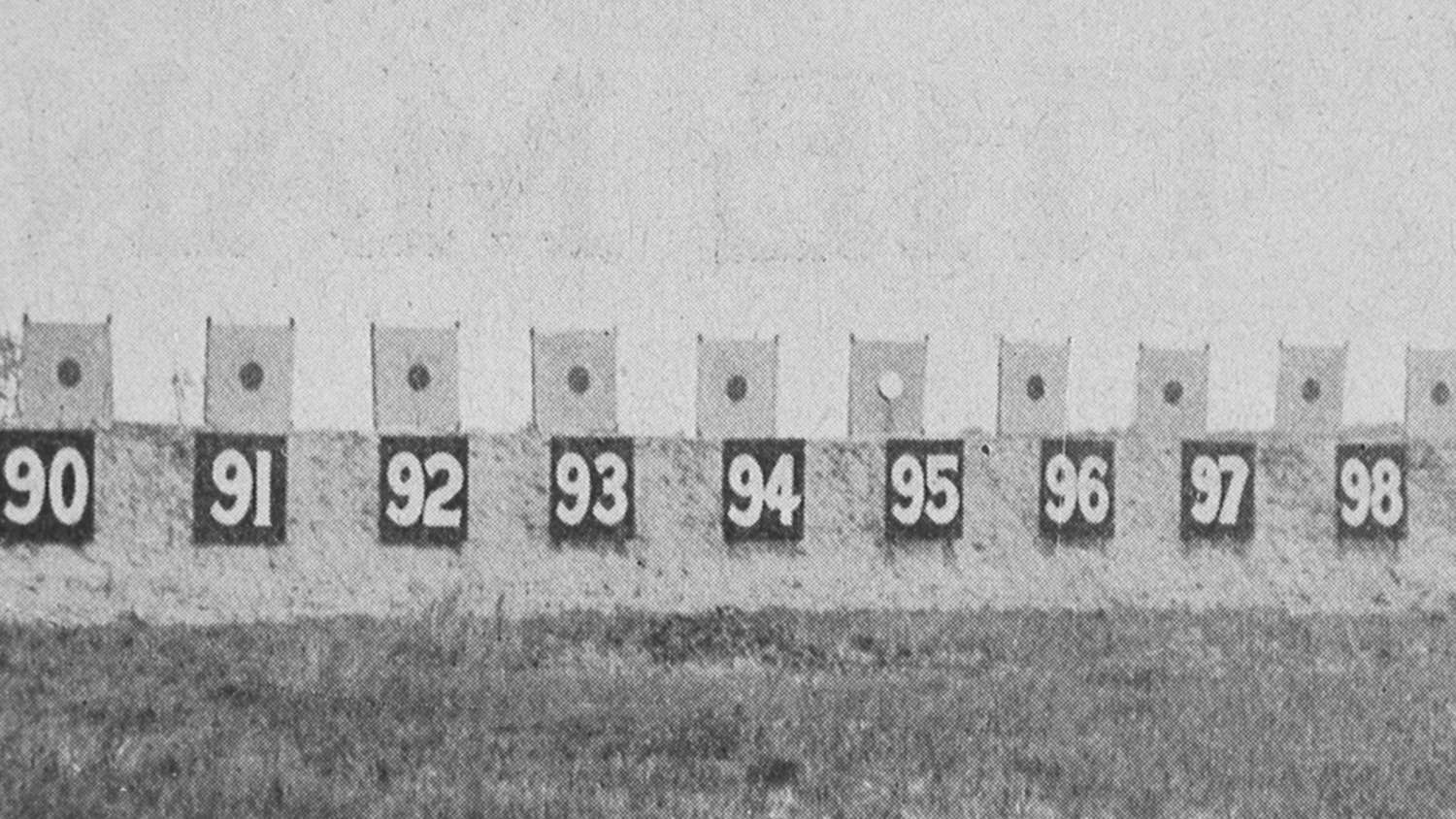
The first National Smallbore Rifle Individual Championship was contested over a single Dewar course of fire. Wotkyns outshot Richard, 392 to 390, to win the inaugural event. Wotkyns’ haul was a gold medal and $6.30 in cash. Richards pocketed $4.70 and a bronze medal. Not a bad haul―considering that the average wages at the time was $25 for a 45-hour workweek.
With his eye on the Dewar Team match, Crossman, along with team Coach Townsend Whelen, carefully watched all the major players in the individual championship and selected the top 40 finishers to participate in an elimination match over the same course of fire. When the scores from the two matches were totaled Richard was on top with Wotkyns in second place, an exact reversal of their finish in the National Championship.
Rounding out the first United States Dewar Trophy team of the modern era were A.E. Hart, Albert F. Laudensack, W.C. Andrews, E.B. Rice, James A, Wade, Cdr. W.W. Stewart, USN, Lt. Col. J.K. Bowles, USA, James E. Miller, Capt. Donald A. Preussner, USA, J.L. Renew, Capt. Paul A. Raymond, USA, Cdr. Willis Augustus Lee, USN, Capt. George W. Chesley, USA, George Schnerring, Walter Stokes, D.W. Price, 17-year old Armand. M. Morgan and, tied for 20th place, Cdr. H.D. Denny, USN and the Match Director’s wife, Mrs. Blanche Crossman.
A shoot-off was scheduled to determine if Denny or Mrs. Crossman would shoot, but was called off because Price, a shooter of no mean skill―had but one arm―and used a forked prosthesis when shooting. The device was determined to be artificial support, barred under the rules, and Price withdrew. Thus Mrs. Crossman entered the shooting history books as the first woman to shoot on a U.S. international shooting team.
On the morning of Sunday, August 24, the team assembled on the firing line and in three relays started shooting under almost ideal conditions.
Specially manufactured prototype Winchester Model 52 rifles were used by 14 team members. A Savage bolt-action Model 19 NRA Match Rifle, two Stevens Model 414s, a pair of rifles built on Ballard actions mounting Andrews barrels and a Winchester 1885 Musket rounded out the rifle selection. Also at their disposal were selected ammunition lots from the various manufacturers. By 1:00 p.m., the match was over with the United States posting a 7617 to Great Britain’s 7523. Newitt, as the official representative of the British, was most effusive in his congratulatory comments.
With his mission a triumph, Crossman took great pleasure in both the team and his wife’s success. More importantly this international win would serve to fan the spark of the smoldering smallbore movement. Within days the NRA, at its annual meeting held at Caldwell, named a blue ribbon committee of Whelen, Crossman, Wotkyns, Army Maj. Richard D. La Garde who was the Director of Civilian Marksmanship, Capt. Thomas Samworth, USA, Maj. Jack J. Dooley, USMC, and Olympic gold and silver medalist Kellogg Kennon Venerable Casey to standardize smallbore competition.
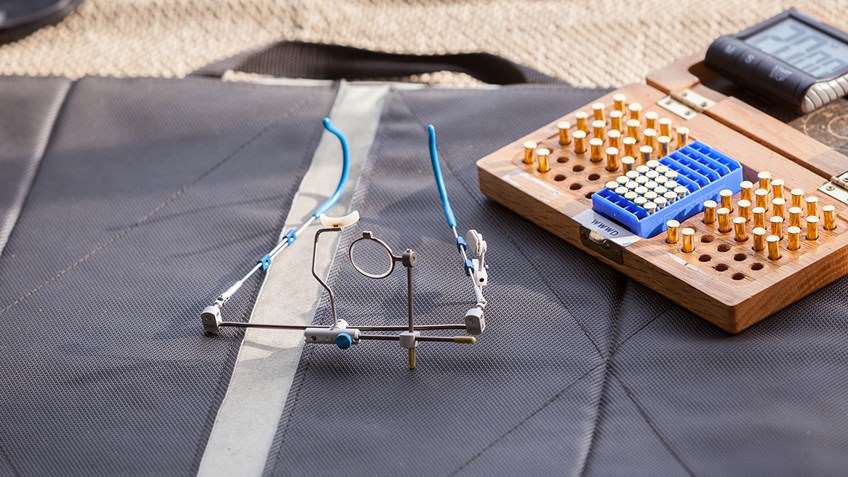
What was just a dream 78 days earlier was now a reality. When the match ended, the growing season for most agriculture crops was coming to an end, but it was just the beginning for the growth of organized smallbore rifle shooting. Just as Crossman had hoped, this, “feature of the shooting game” has “become a permanent part of the annual matches of the great parent organization.”
Crossman had closed out his forward in the match program by musing that, “If our friends in the Small-bore Clan will keep in mind that this is their shoot … the experiment will prove a success.”
The National Smallbore Rifle Outdoor Championship will celebrate the centennial of its birth in July 2019. Given the fact that it has been fired 94 times in the past 100 years, the flow interrupted only by budget constraints once, and war five times, shooting eleven prone and seven position courses of fire at seven locations―it is only fair to say that Crossman’s prediction has come true. The experiment has proven to be a success.
Read Part 2 in our series on the history of the National Outdoor Smallbore Rifle Championships.













